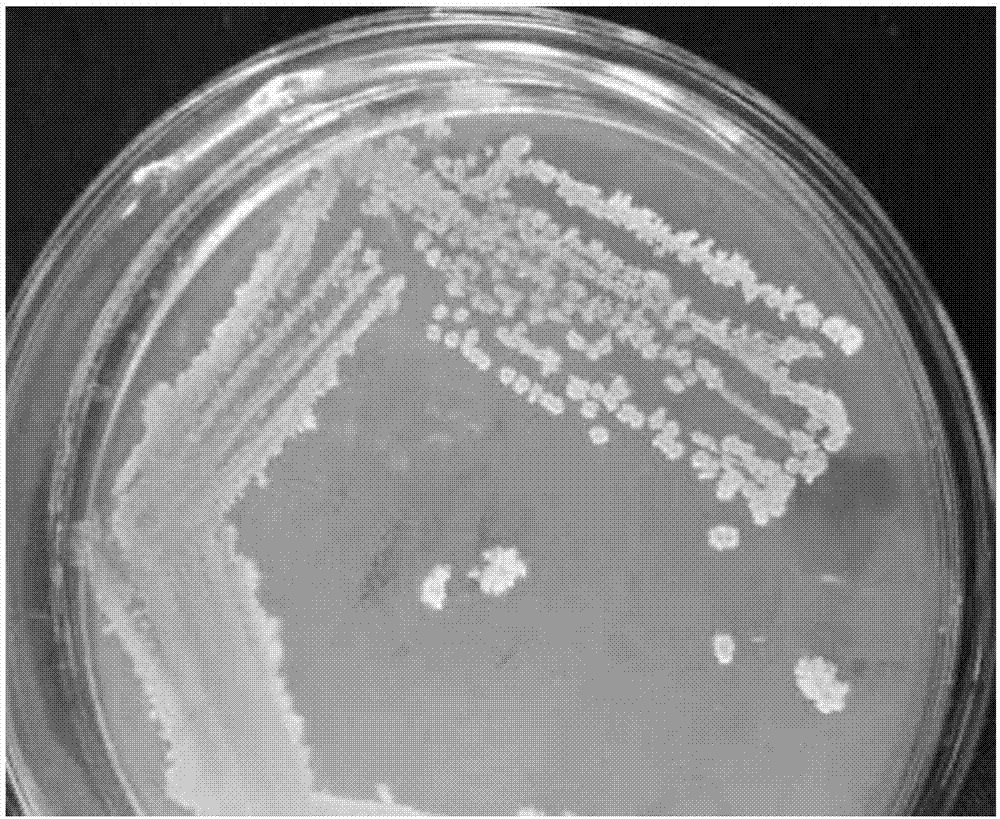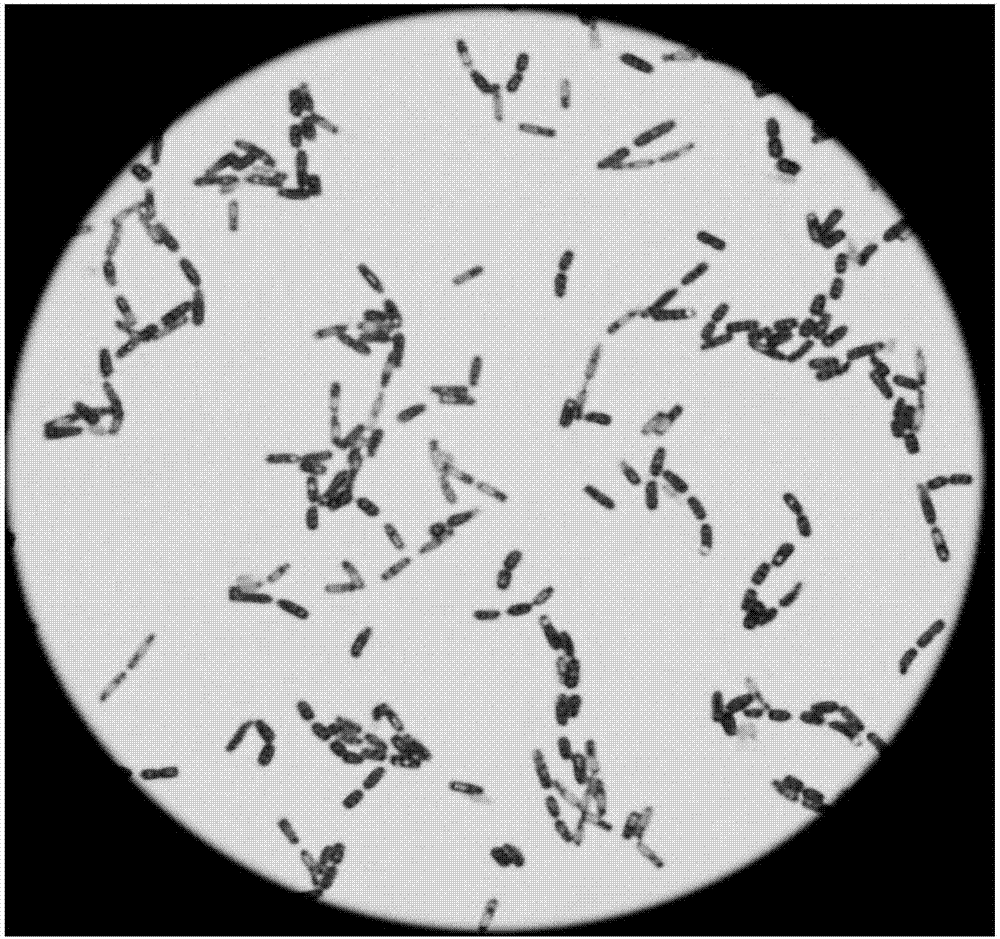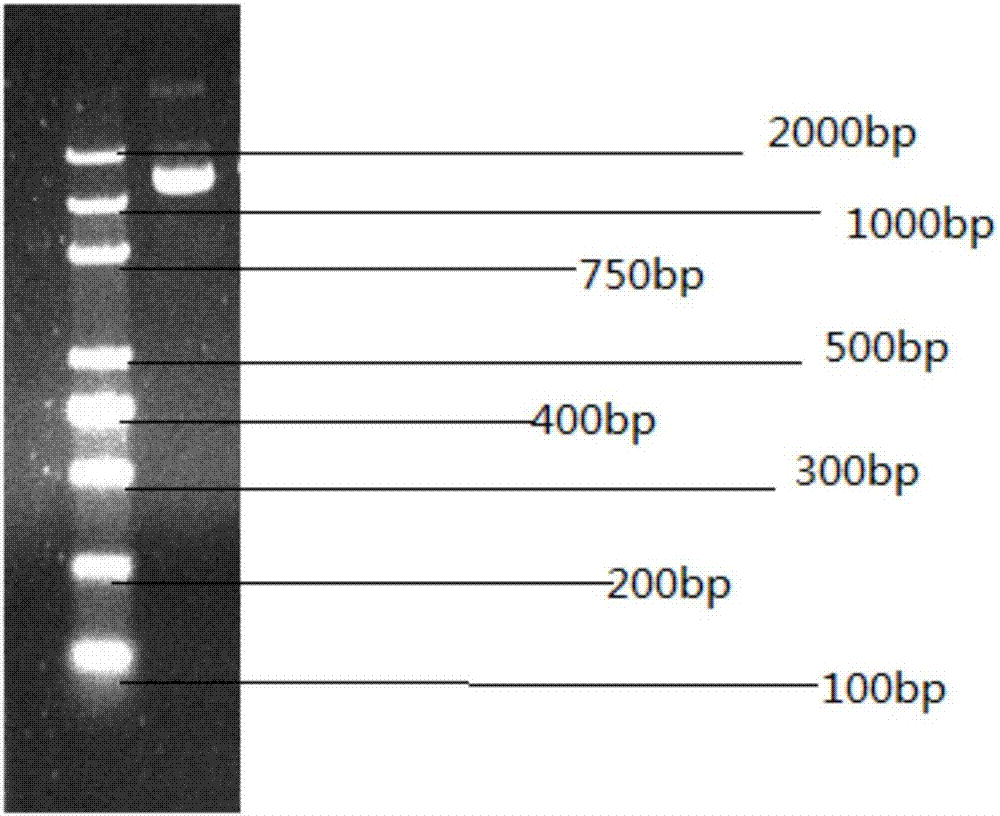Bacillus megaterium and application thereof in treating heavy metal-glyphosate complex pollution
A technology of Bacillus megaterium and heavy metals, applied in the field of microorganisms, can solve the problems of ineffective treatment of heavy metal-glyphosate complex pollution and achieve good degradation effect
- Summary
- Abstract
- Description
- Claims
- Application Information
AI Technical Summary
Problems solved by technology
Method used
Image
Examples
Embodiment 1
[0038] Embodiment 1, the screening of Bacillus megaterium PP84
[0039] (1) Isolation and purification of strains
[0040]1. Enrichment of bacterial strains: Collect 2.5g of farmland soil samples that have been applied with glyphosate for a long time, place them in a shake flask containing 60mL enrichment medium, add 30mL of 100mM glyphosate and 10mL of 5mM CuCl2 solution prepared by sterile water , placed in a shaker, 30 ° C, 180 rpm, constant temperature shaking culture for 4 days.
[0041] 2. Acclimatization of bacterial strains: under aseptic conditions, add the bacterial solution to the inorganic salt basic liquid medium with glyphosate as the only carbon source at an inoculum size of 10%. Increased to 500mM, from 5mM, 10mM to 15mM. The total volume of the culture solution is 100mL, placed in a shaker, 30°C, 180rpm, constant temperature shaking culture, 4d is one acclimatization cycle, and three cycles of acclimatization are carried out.
[0042] 3. Purification of str...
Embodiment 2
[0049] Example 2 Tolerance and degradability of bacterial strain PP84 to glyphosate
[0050] Under sterile conditions, the purified strain PP84 was pre-cultured in a basal salt medium containing 200mM glyphosate for 24 hours (OD ≈ 1.0), and the culture solution was inoculated into the basal salt medium with an inoculum volume fraction of 5%. , adding different concentrations (100, 250 and 500 mM) of glyphosate as a carbon source, respectively, 30 ° C, 180 rpm, shaking culture for 4 days. Samples were taken every 6 hours to determine the growth of bacteria and the degradation rate of glyphosate. Use an ultraviolet spectrophotometer to measure the OD value of the bacteria at a wavelength of 600 nm, and draw a growth curve. The concentration of glyphosate in the supernatant was determined by nitrosylation ultraviolet spectrophotometry.
[0051] Calculation method of degradation rate: degradation rate (%)=(1-C1 / C0)×100. C1: Glyphosate residual concentration in degrading bacteri...
Embodiment 3
[0054] Degradation of glyphosate by bacterial strain PP84 under different pHs in embodiment 3
[0055] Under sterile conditions, the purified strain PP84 was pre-cultured in a basal salt medium containing 200mM glyphosate for 24h (OD ≈ 1.0), and the culture solution was inoculated to a pH of 5.0 according to an inoculum volume fraction of 5%. 6.0, 7.0, 8.0, 9.0 In the inorganic salt medium with 250mM glyphosate as the sole carbon source, 30°C, 180rpm, constant temperature shaking culture for 56h, the degradation rate of glyphosate was measured. The determination of the glyphosate degradation rate is the same as that of the implementation case 2.
[0056] Depend on Image 6 It can be seen that the strain PP84 grows in a wide pH range in the culture medium with glyphosate as the sole carbon source, grows well in the range between pH 4.0 and pH 9.0, and has good tolerance to glyphosate. Degradation. The optimum pH range for strain PP84 to degrade glyphosate was pH5.0-8.0, and ...
PUM
 Login to View More
Login to View More Abstract
Description
Claims
Application Information
 Login to View More
Login to View More - R&D
- Intellectual Property
- Life Sciences
- Materials
- Tech Scout
- Unparalleled Data Quality
- Higher Quality Content
- 60% Fewer Hallucinations
Browse by: Latest US Patents, China's latest patents, Technical Efficacy Thesaurus, Application Domain, Technology Topic, Popular Technical Reports.
© 2025 PatSnap. All rights reserved.Legal|Privacy policy|Modern Slavery Act Transparency Statement|Sitemap|About US| Contact US: help@patsnap.com



